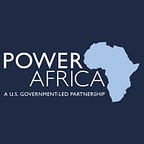Ethiopian Energy Company Lights a New Path in Local Communities
Approximately 70 million Ethiopians currently lack access to the electrical grid, the third-largest unelectrified population on the continent of Africa, behind only Nigeria and the Democratic Republic of Congo¹. The Government of Ethiopia has set ambitious rural electrification targets and is making progress on them, but the government recognizes that it alone cannot electrify the entire country, parts of which are too remote for the national grid to feasibly reach. The private sector will be critical for less densely populated parts of the country to receive electricity access, through small-scale solutions from mini-grids to solar home systems.
According to Power Africa’s recent Off-Grid Solar Market Assessment for Ethiopia, approximately 15 percent of the off-grid population can be cost-effectively reached by mini-grids, small systems typically in the range of 10–100 kW that are often operated by a local private company, essentially as a mini-utility. Yet until recently, no private company in Ethiopia was able to invest in such a system because a license had never been granted. Ethio Resource Group (ERG), an Ethiopian company funded by the U.S. African Development Foundation (USADF) with the support of Power Africa, recently changed this narrative by becoming the first company in Ethiopia to be granted a license for electricity distribution and sales for a wind-powered mini-grid. The project was commissioned in 2017 although it took another two years for ERG to receive license #00001, an achievement that signals a new opening for private sector-driven distributed energy provision.
In the words of ERG head Hilawe Lakew, “It is because of the USADF support…that the first license of this type is issued to a private company…Its impact as a ‘pipe cleaner’ project for other similar projects to come is unprecedented.” Since being granted license 00001, ERG has begun collecting tariffs for electricity sales to the community of Menz Gidir, a first for a private distributor in the country.
Other African energy enterprises and entrepreneurs receiving investments from USADF and Power Africa have broken new ground elsewhere. Rensys Engineering & Trading, a USADF grantee in Ethiopia, successfully commissioned the country’s first private solar-powered mini-grid on the island of Dek in the middle of a lake in the northern part of the country. Rensys hopes to receive license #00002. Similarly, in Zambia, USADF grantee Muhanya Solar commissioned that country’s first privately-owned solar mini-grid. In Liberia, USADF grantee Liberian Engineering and Geotech commissioned the country’s first privately-owned solar mini-grid at a ceremony attended by President Ellen Johnson Sirleaf.
These projects are all shining examples of success that help deliver energy access, reduce emissions, and create opportunities for U.S. exports. Breaking regulatory barriers, opening up the private mini-grid sector, and expanding energy access in a country like Ethiopia, where a massive market of tens of millions of households stand to benefit, are essential to the future of prosperity in Africa. Supporting the growth of renewable energy industries in the continent’s largest economies like Ethiopia and Nigeria will help those countries provide power to a larger share of the populace, and at the same time, opens up opportunities for U.S. businesses. That is because Rensys, Muhanya, and other mini-grid companies purchase technology from U.S. companies to use in their installations, including smart meters, charge controllers, inverters, and batteries. All of these energy projects also reflect USADF’s mission to create pathways to prosperity and self-reliance in underserved communities in Africa.
